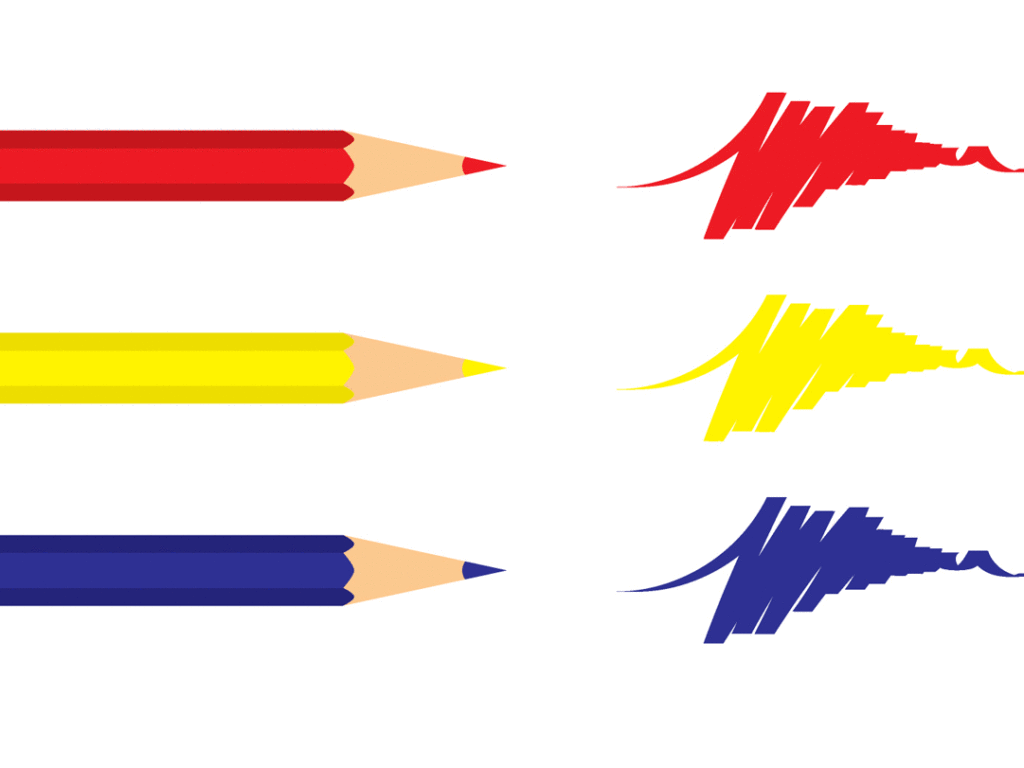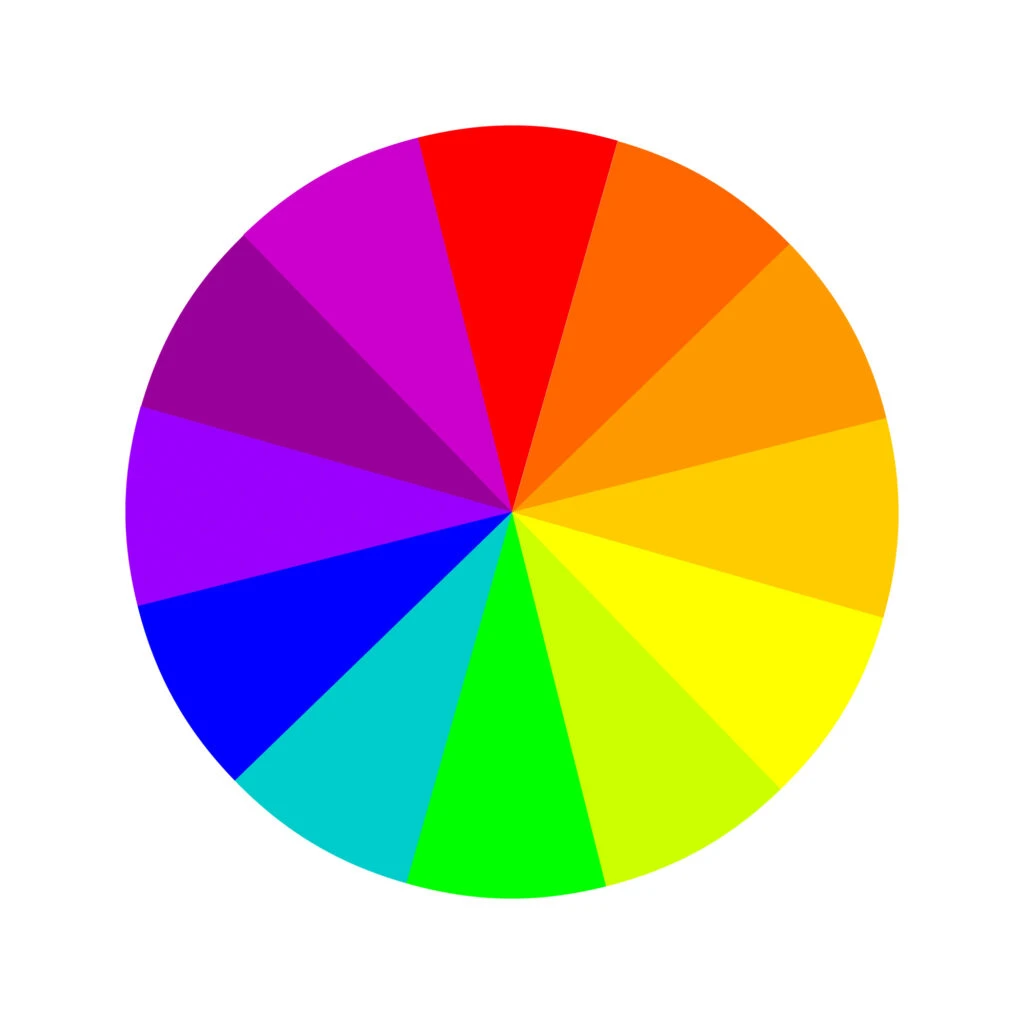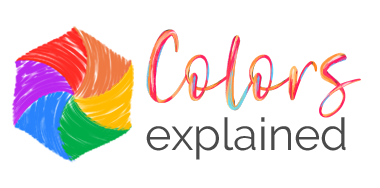If you’re an artist using traditional media or an interior designer working with color swatches and fabrics, you work with the RYB color model every day.
The deeper your understanding of the RYB color wheel, the more you’ll be able to work competently and confidently with pigments, paints, and color schemes.
In this post, we’ll explain what the subtractive RYB color model is, the basics of RYB colors, and applications for this valuable information.
But before we get into explaining the RGB color model specifically, let’s briefly cover what a color model is and why color models exist.

What is a Color Model?
A color model (also known as a color system) is a process for creating more colors starting from a few primary colors.
Color models explain how color works in different situations and applications, like what the analogous colors or complementary colors are, etc. Our goal is to explain how this happens in the RYB color model.
What is the RYB Color Model?
RYB is also called “traditional color theory” (or even “the correct color theory,” according to some color theorists).
This is what you probably learned as a kid in school. It’s called “RYB” because the primary colors are red, yellow, and blue.
RYB Colors Explained
Instead of mixing light as the RGB model does, RYB explains what happens when you mix pigments.
In this model, you start with white (your blank slate) and add pigments to the surface.
If you put a dab of red paint on a white canvas (your base color), that paint absorbs all wavelengths of visible light (white light) from the spectrum of colors except for the red ones, leaving your eyes to interpret the result as the color red.
You make colors by mixing wavelengths of light, so something that looks red will reflect red wavelengths. If you mix all the primary colors equally, you get brown.
Once you remove red, yellow, and blue pigments, other colors will be visible.

In other words, RYB is a subtractive color model (unlike RGB, which mixes red, green, and blue light and is an additive color model).
Our eyes and brain translate the light which bounces off objects into the perception of color.
RYB was the standard color model in the 18th century which was supported by psychological color effects, such as complementary colors that our eyes see as afterimages. Back then, Jacob Christoph Le Blon was the first to apply the RYB color model to printing.
At that time, Isaac Newton’s color circle (color wheel) was a bit different than it is now, and the concepts of additive and subtractive color mixing didn’t exist.
RYB Colors
Primary Colors
As we said, the RYB model’s primary colors are red, yellow, and blue.
Secondary Colors
You can create secondary colors by blending primary colors together.
- Red + Yellow = Orange
- Red + Blue = Purple
- Yellow + Blue = Green
Tertiary Colors
To create tertiary colors, you can either mix a primary color with a secondary color or combine two secondary colors. Examples of RYB tertiary colors include:
- Green + Purple = Slate
- Green + Orange = Olive
- Purple + Orange = Brown
Applicability
You want to reference the RYB color wheel whenever you’re working with traditional art, painting, or mixing paint.
This also often comes into play in applied design, including interior design. Anytime pigments are being blended to create color palettes in the real world, that’s the RYB color model at play.
In art and design education, red, yellow, and blue pigments are usually enriched with white and black pigments, allowing the creation of a larger gamut of color nuances, like tints, shades, and tones.
Color models can be intimidating to learn about at first. It can feel like a clinical, analytical way of looking at something that can feel like it comes very naturally to us (color).
But understanding the theory behind the RYB color model can help you interact with the world of color from a better-informed place, which will take your art and designs to a whole new level.

Craig Lungren
Monday 22nd of May 2023
Hi there!
Being as Paint has to do with the RYB Colour Model, I believe …
- All 3 Primary Colours mixed equally together are supposed to make BROWN and not “Nearly-Black”. I even found a website (which is mainly for Kids’ Art activities, etc.) that says all 3 Primary Colours mixed together equally make the colour “Gray”, which becomes as equally misunderstood as “Nearly-Black” is (in many “Colour Mixing” websites) whenever showing All Primary Colors Mixed Equally in the RYB Colour Model.
- Some color-mixing combinations are showing the incorrect answer for the colour Brown. For example, some websites say “Red + Black = Brown” while on this website it says “Purple + Orange = Brown”. However, the correct answers for those 2 combinations should be “Red + Black = Maroon - in this case Dark Red” and “Purple + Orange = ??”.
- Mixing Complementary Colours equally also make Brown - this includes “Red + Green”, “Orange + Blue” & “Yellow + Purple”! Even Brown itself will remain as Dark Orange overall in every Colour Model! That is “Orange + Black”.
I may write another comment on this website soon! 🙂
Bruna
Friday 26th of May 2023
Hey Craig, thanks for your comment! Here are my answers:
1. true. By mixing all primary colors, you get brown, indeed. That's also my knowledge. Not sure why I wrote "nearly black," to be honest. Updated the article!
2. You mean some "color-mixing combinations are showing the incorrect answer for the color brown" on this site? Could you point them out to me? Because purple + orange do make brown, a reddish one to be exact, because you have red in both purple and orange. I don't think red + black = brown, but a dark red, as you said.
3. Yep, that's right! Well done. Feel free to comment more often. I really enjoy talking about these things with other color lovers. :)